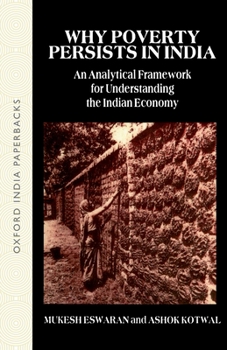Why Poverty Persists in India: A Framework for Understanding the Indian Economy
After fifty years of development, mass poverty still persists in India. This analysis attempts to bring out how various sectors of the economy impinge on the development process. The authors show that two key features to the elimination of poverty in India are transferring labor from agriculture to industry and growth in agricultural productivity. They argue that industrial progress cannot benefit the poor in the absence of progress in the agricultural sector. They also show that by exporting industrial goods, the labor force employed in agriculture can be reduced and the poor in India would be made better off. Finally, they argue that India's industrial policy from Independence until very recently was designed to stifle entrepreneurship and undermine technical advancement.
Format:Paperback
Language:English
ISBN:0195632389
ISBN13:9780195632385
Release Date:June 1994
Publisher:Oxford University Press, USA
Length:136 Pages
Weight:0.35 lbs.
Dimensions:0.3" x 5.6" x 8.6"
Customer Reviews
1 rating
Simple Models, Profound Ideas
Published by Thriftbooks.com User , 19 years ago
This book uses simple, non-mathematical economic models to analyze poverty in India. The authors' basic idea is that reducing India's high labor/land ratio is the only way to raise living standards for hundreds of millions of Indians who live below the poverty line. Along the way, the authors give incredibly clear explanations of basic economic concepts like marginal product, general equilibrium, and comparative advantage. They also use their models to provide a fascinating explanation of why free trade with Britain probably increased poverty in India in the 18th and 19th centuries. I gave the book four stars instead of five only because the discussion of contemporary policy issues is dated and overly-anecdotal. Otherwise, this book is a small gem of exposition and analysis. If only all economists wrote this well.






